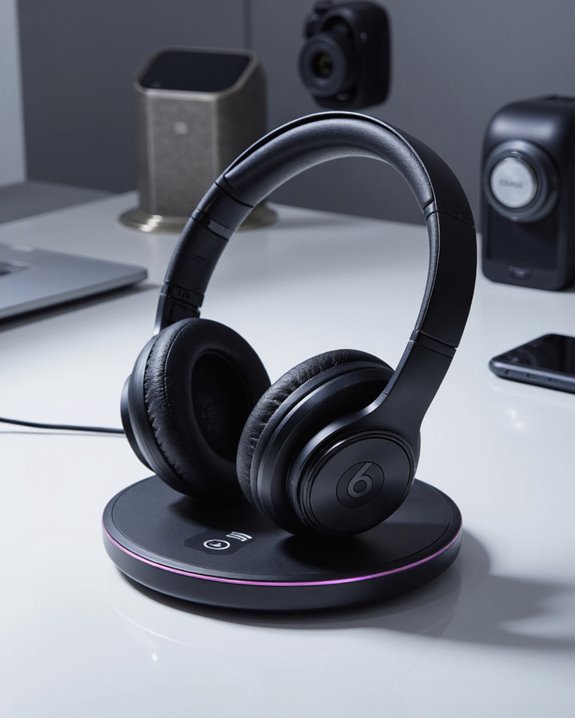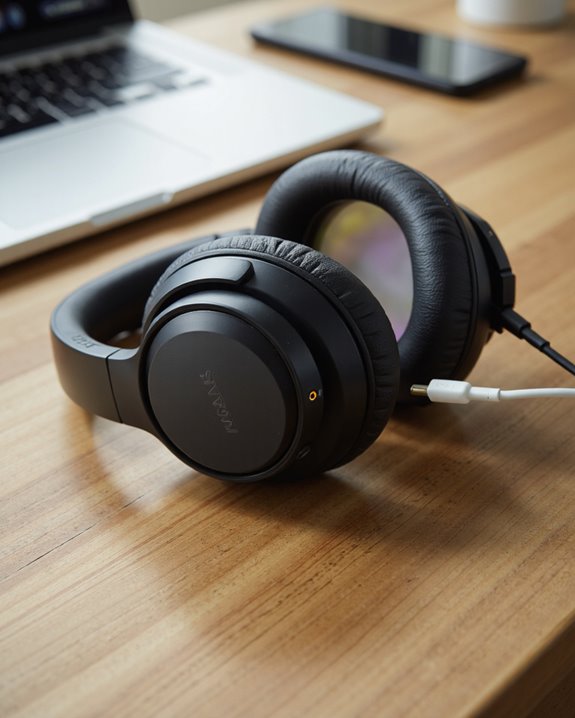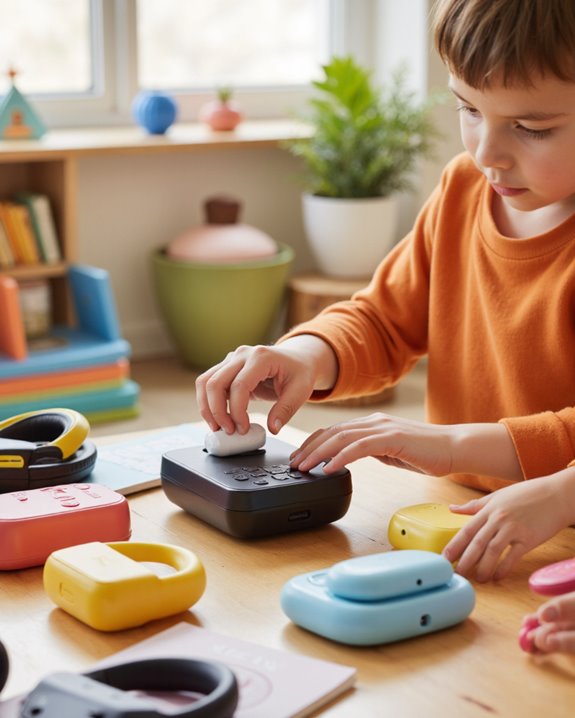As an Amazon Associate, we earn from qualifying purchases. Some links may be affiliate links at no extra cost to you. Although our opinions are based on curated research, we haven't used these products. Articles generated with AI.
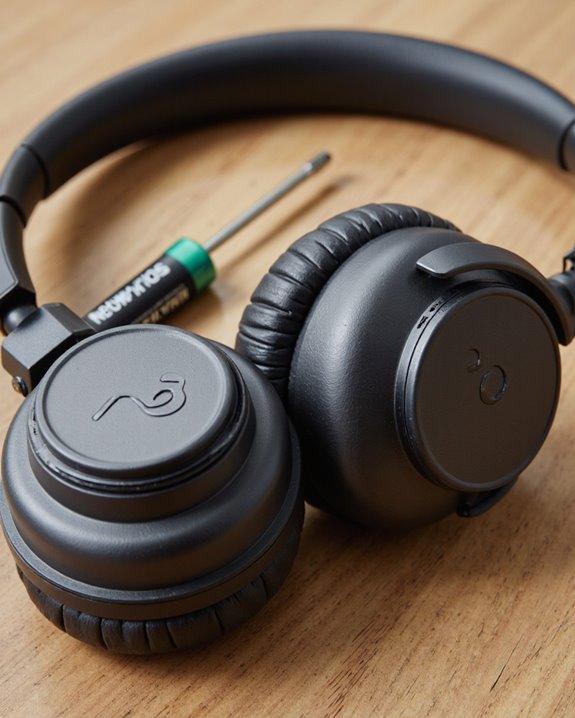
Do Headphones Have Lithium Batteries?
Yes, most wireless headphones today use rechargeable lithium-ion or lithium-polymer batteries, thanks to their high energy density, lightweight build, and low self-discharge rates. Typically, a 500mAh lithium-ion cell powers up to 8 hours of playback and lasts 2-3 years through 300-500 charge cycles. Lithium-polymer variants allow slimmer designs while maintaining efficiency. These specifications enable compact, comfortable headphones that reliably perform daily. If you’re curious about maximizing battery life or when to evaluate replacement, there’s more you’ll find useful next.
Key Takeaways
- Most modern wireless headphones use lithium-ion or lithium-polymer batteries as their main power source.
- Lithium-ion batteries are preferred due to their lightweight design, high energy density, and long playback times.
- These batteries typically provide 8 hours of playback and last for 2-3 years or 300-500 charge cycles.
- Lithium batteries allow for quick charging, portability, and reliable performance in audio devices.
- Signs of battery wear include reduced playtime, sudden shutdowns, and the need for eventual replacement.
Types of Batteries Used in Modern Headphones
When we look at the batteries powering today’s headphones, two main types stand out: lithium-ion and lithium-polymer. Most modern Bluetooth Headphones rely on a lithium battery, specifically lithium-ion, thanks to their lightweight profile, high energy density, and low self-discharge rates. These attributes mean a typical headphone battery can support 8 hours of playback from a 500mAh cell and last 2-3 years, handling about 300-500 charge cycles before capacity declines. Lithium-polymer batteries, while less common, offer advantages in certain designs—they’re even lighter and flexible, allowing manufacturers to create slimmer or uniquely shaped headphones. For both battery types, maintaining ideal charge levels (30-80%) and avoiding extreme temperatures can extend their lifespan by roughly 20%, delivering better value and consistent performance.
Why Lithium-Ion Batteries Are Preferred in Audio Devices
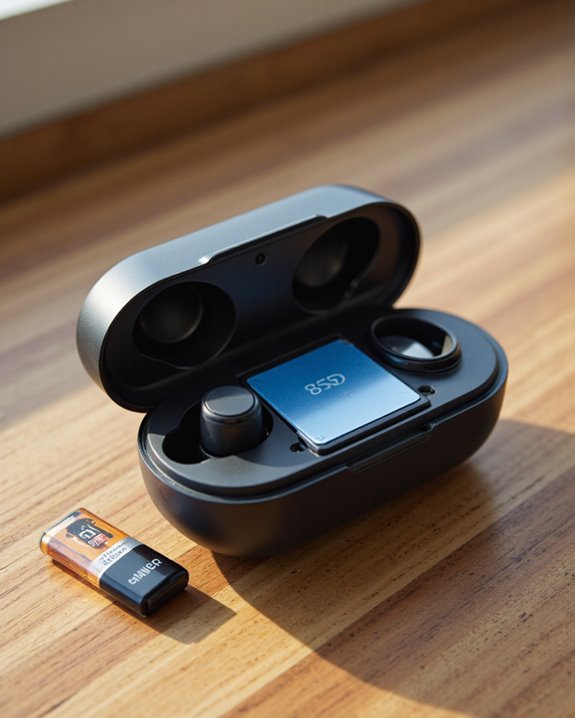
Although there are several battery chemistries available, lithium-ion batteries have become the clear choice for powering audio devices like headphones due to their unique combination of technical strengths. These batteries deliver high energy density, which translates into longer playback times without making wireless headphones bulky or uncomfortable. Their low self-discharge rate means they hold a charge well, even if we don’t use our headphones for days at a time. Lithium-ion batteries are also lightweight, supporting portability and everyday comfort. Quick charging is another practical benefit—most reach full capacity in just a couple of hours. Combined with a reliable lifespan of 2–3 years and 300–500 charge cycles, lithium-ion batteries offer consistent performance for modern audio needs. Many of the best wireless headphones in 2025 leverage rapid charging technology to maximize usability and convenience for users.
Battery Lifespan and Performance in Wireless Headphones

With lithium-ion batteries powering our wireless headphones, it’s important to know how these cells perform over time and what factors influence their longevity. Typically, a lithium-ion battery in wireless headphones offers a battery lifespan of about 2–3 years, or 300–500 charge cycles, before its performance starts to decline. To maximize longevity, we should keep battery levels between 30–80%, as this practice can extend the battery lifespan by roughly 20%. High-volume listening and exposure to extreme temperatures accelerate battery drain and can degrade performance. Common indicators of a weakening battery are reduced playtime per charge and erratic behavior, such as sudden shutdowns or rapid discharge. Understanding these patterns helps us make informed decisions about usage and expect predictable performance from our wireless headphones. Additionally, features like quick charging can provide several hours of playback from just a few minutes of charging, helping mitigate battery limitations during daily use.
Safe Charging and Storage Practices for Headphone Batteries
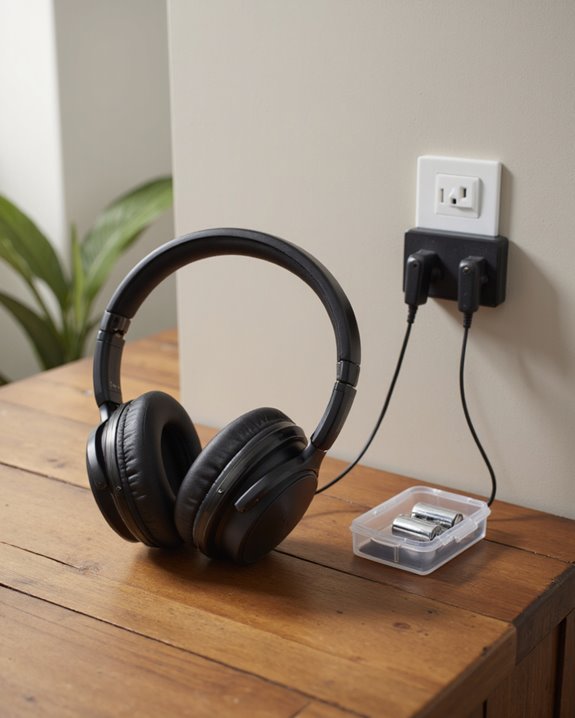
Even as wireless headphones have become indispensable in our daily routines, ensuring the safety and longevity of their lithium-ion batteries requires deliberate charging and storage practices.
Safe Charging Practices
For ideal safety, we should always use the charger provided by the manufacturer, as third-party chargers may not regulate voltage and current appropriately, increasing risk to the headphones’ lithium-ion batteries. Charging in extreme temperatures—especially above 35°C (95°F)—should be avoided; heat accelerates degradation and could trigger thermal stress. Overcharging is another hazard, so unplugging once fully charged is a prudent habit.
Proper Storage Guidelines
When not in use, storing headphones in a cool, dry environment preserves battery condition. For long-term storage, it’s best to keep the battery charge between 30% and 80%. Additionally, handling headphones gently prevents physical damage—like punctures or crushing—that could compromise battery safety.
Signs of Battery Wear and Replacement Options
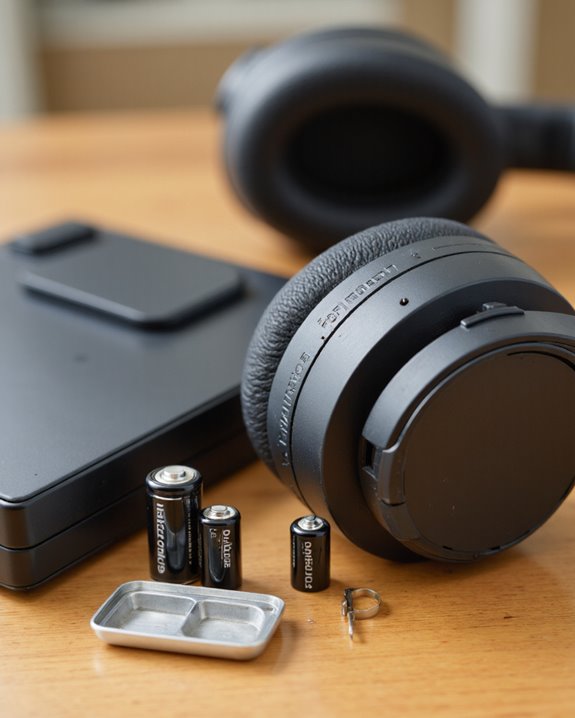
Once headphones have been used regularly for a year or more, it’s important for us to recognize the early signs of lithium-ion battery wear to guarantee both safety and peak performance. Since most headphones use lithium-ion batteries, we’ll notice reduced listening time on a single charge, inconsistent operation—like sudden shutdowns—and, in rare cases, visible battery swelling. These are all clear signs of battery wear. Typically, lithium-ion cells last 2–3 years or 300–500 charge cycles before showing degradation. If we observe rapidly declining battery life or an inability to hold a charge, exploring headphones replacement options is wise. DIY battery replacement costs $10–$30, while professional service ranges from $50–$100. Proper battery care can extend lifespan by around 20%. Some advanced headphones, like the Beats Studio Pro, offer features such as Fast Fuel charging that can help mitigate battery downtime.
Frequently Asked Questions
Do Headphones Use Lithium Batteries?
Just like the Energizer Bunny, our wireless headphones keep going thanks to lithium batteries. Their battery lifespan depends on charging habits—let’s remember charging tips like avoiding overcharging and extreme heat to keep our headphones playing longer.
Can You Bring Headphones With Lithium Batteries on a Plane?
When we travel, we can bring headphones with lithium batteries, as long as we follow headphone safety regulations and lithium battery guidelines. Let’s keep them in our carry-on for convenience and remember these travel tips for a smooth flight.
How Do I Know if My Device Has a Lithium Battery?
When we’re checking our device, we use battery identification methods like reviewing product specs or labels for “Li-ion.” Understanding headphone battery types helps guarantee lithium battery safety, so let’s always verify with manuals or manufacturers for confirmation.
Can You Put Headphones in Checked Luggage?
When we pack headphones in checked luggage, let’s follow headphone safety tips and stay updated on luggage regulations. For travel essentials, it’s safer to carry them in our carry-on, especially if they contain lithium batteries or show damage.


